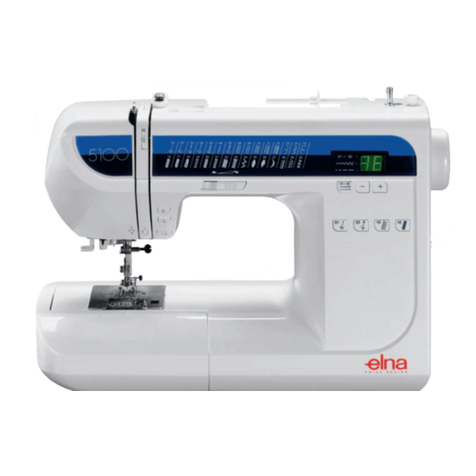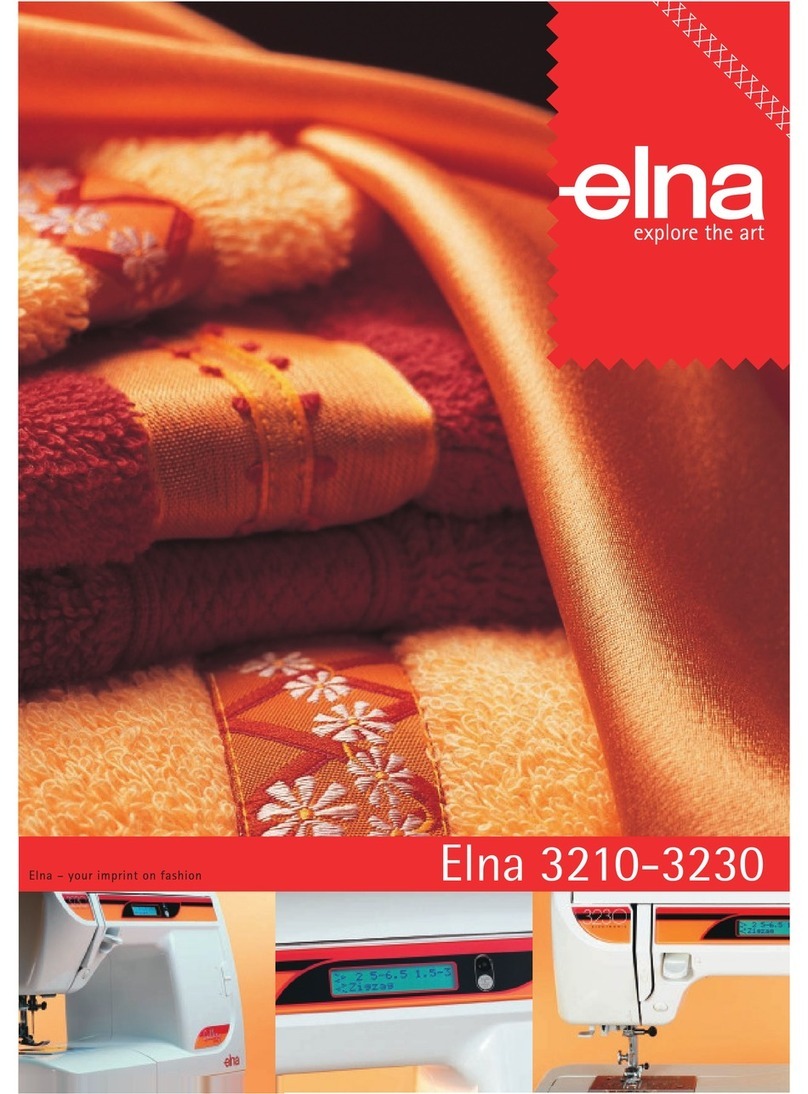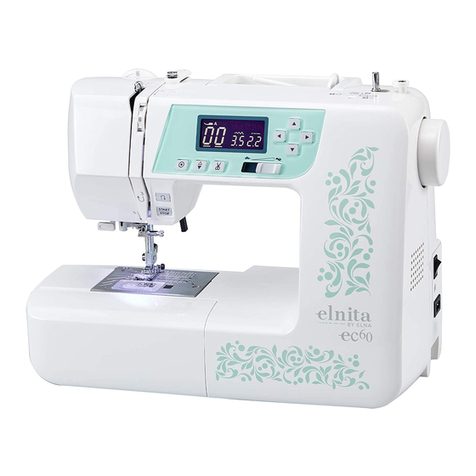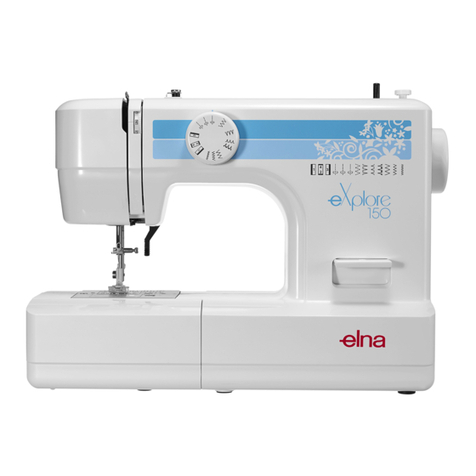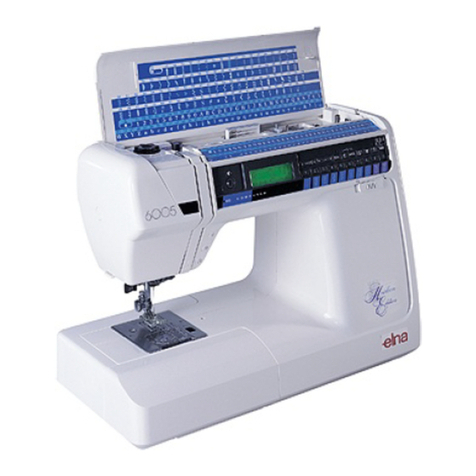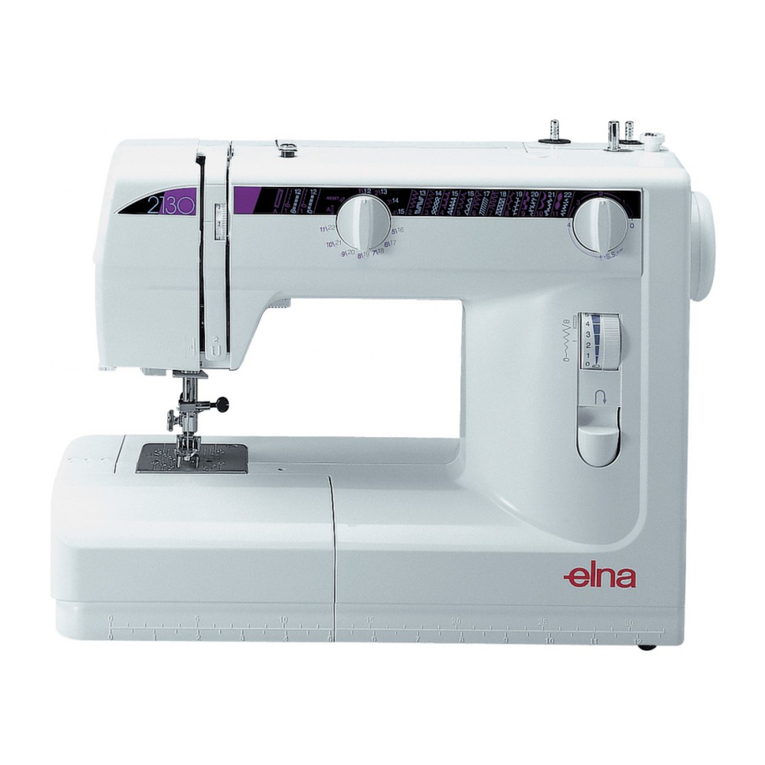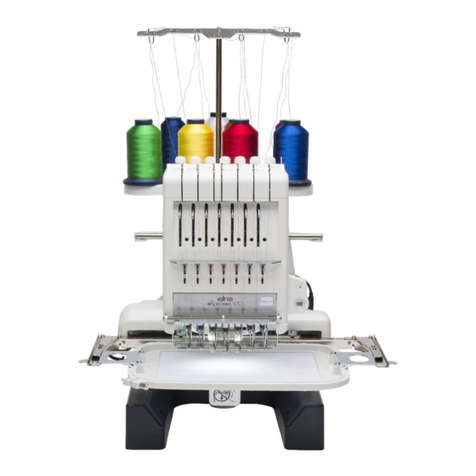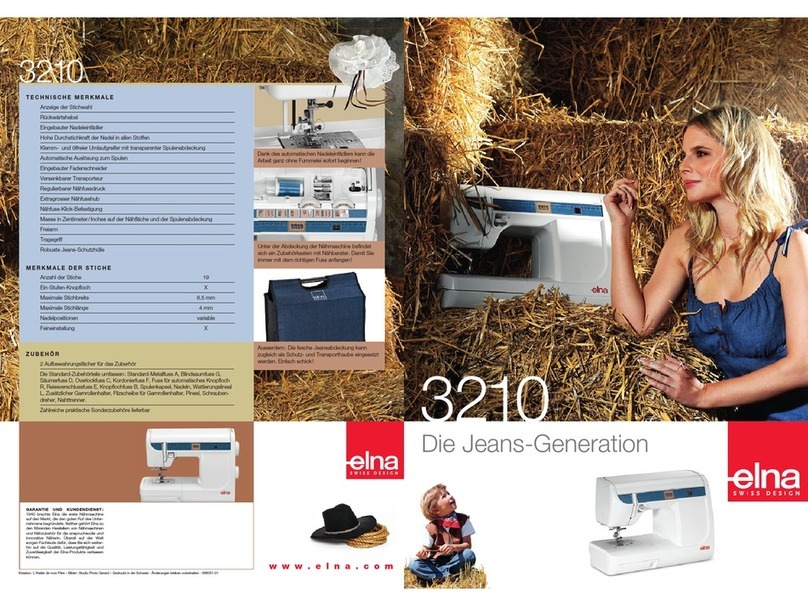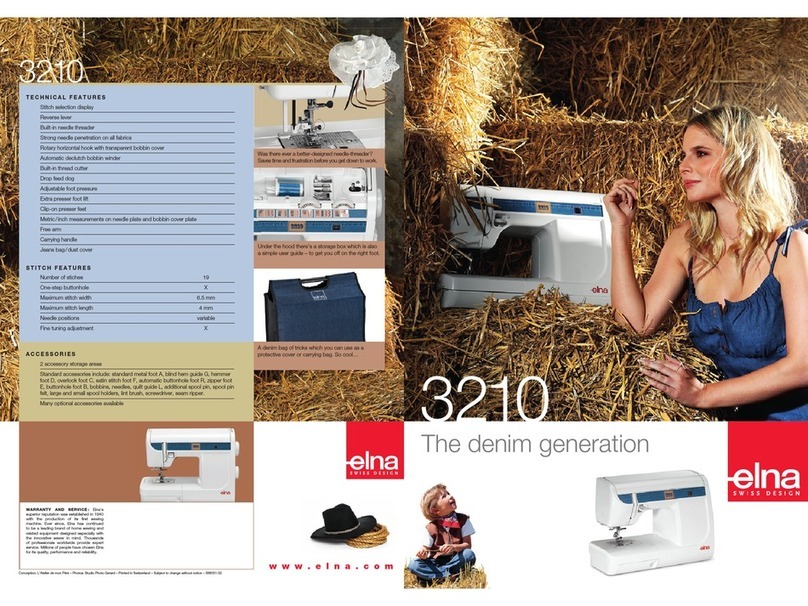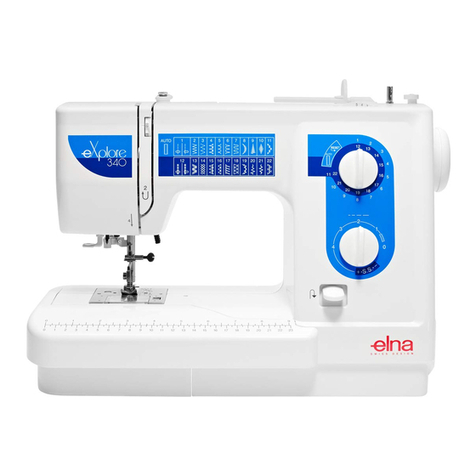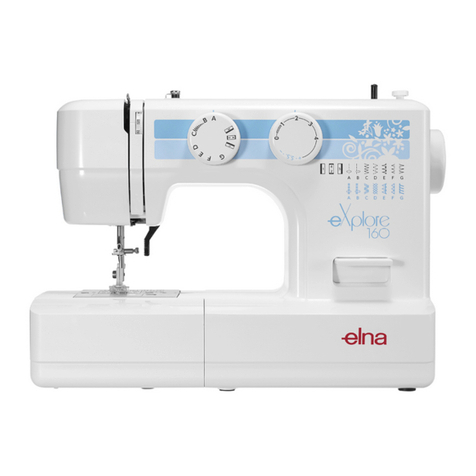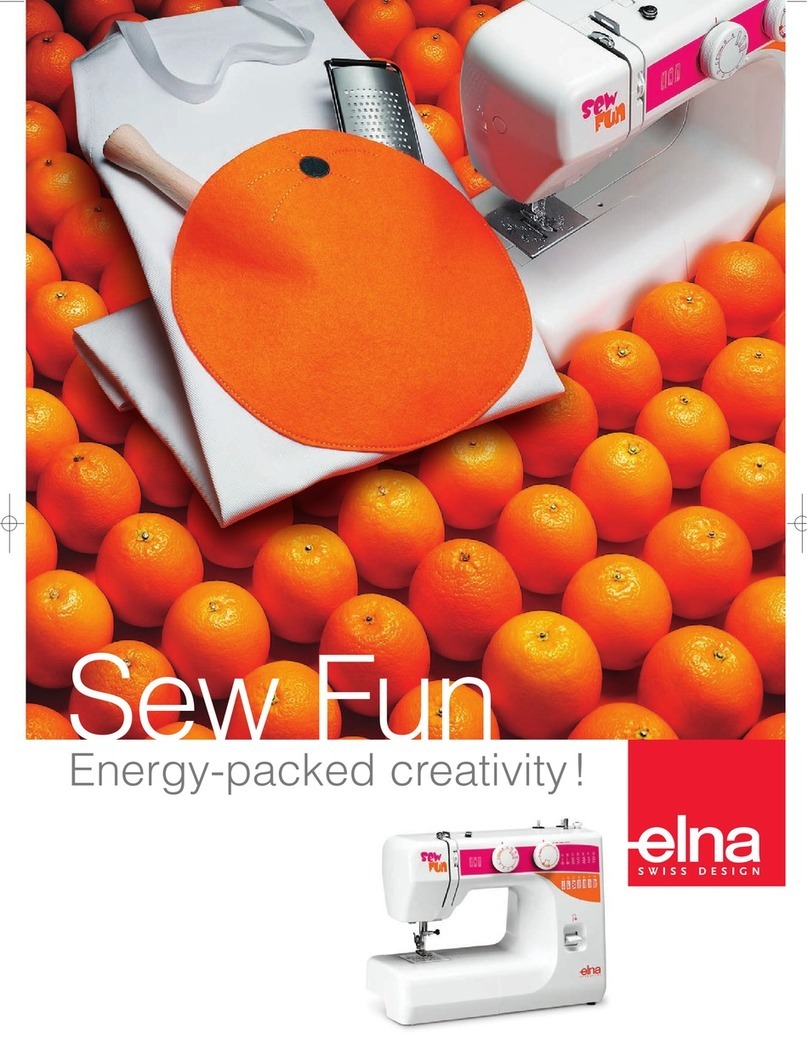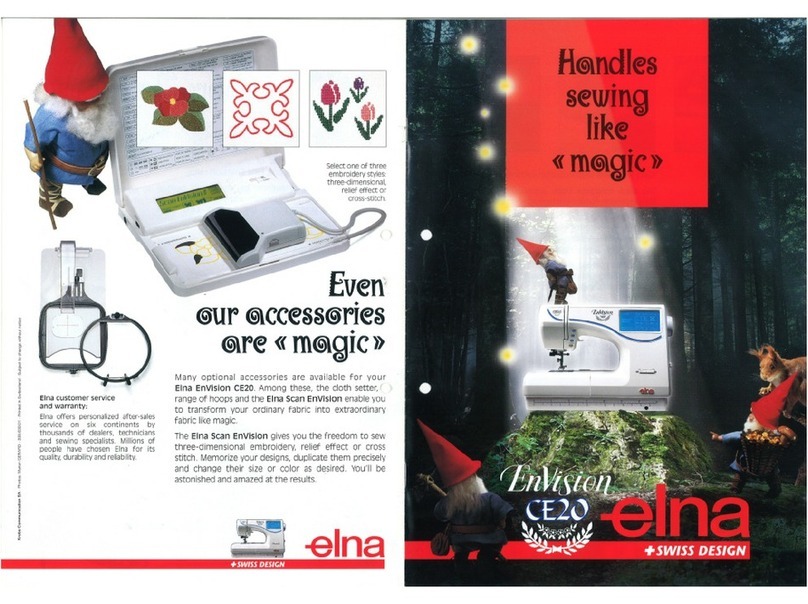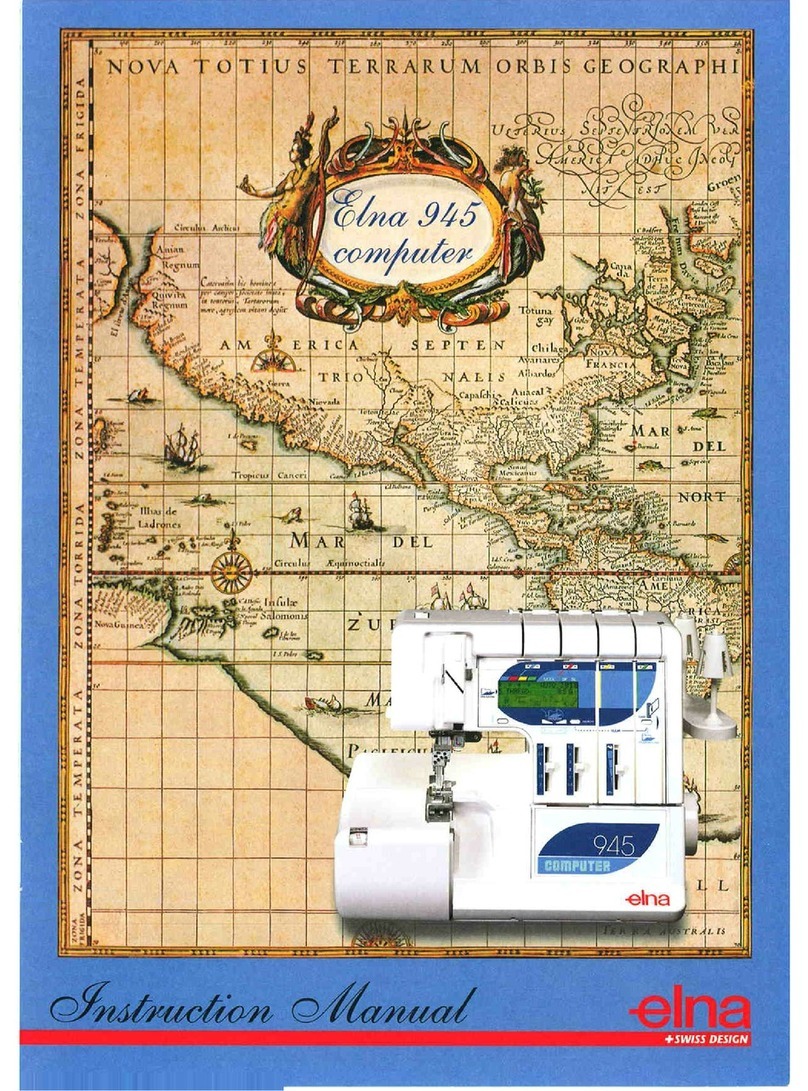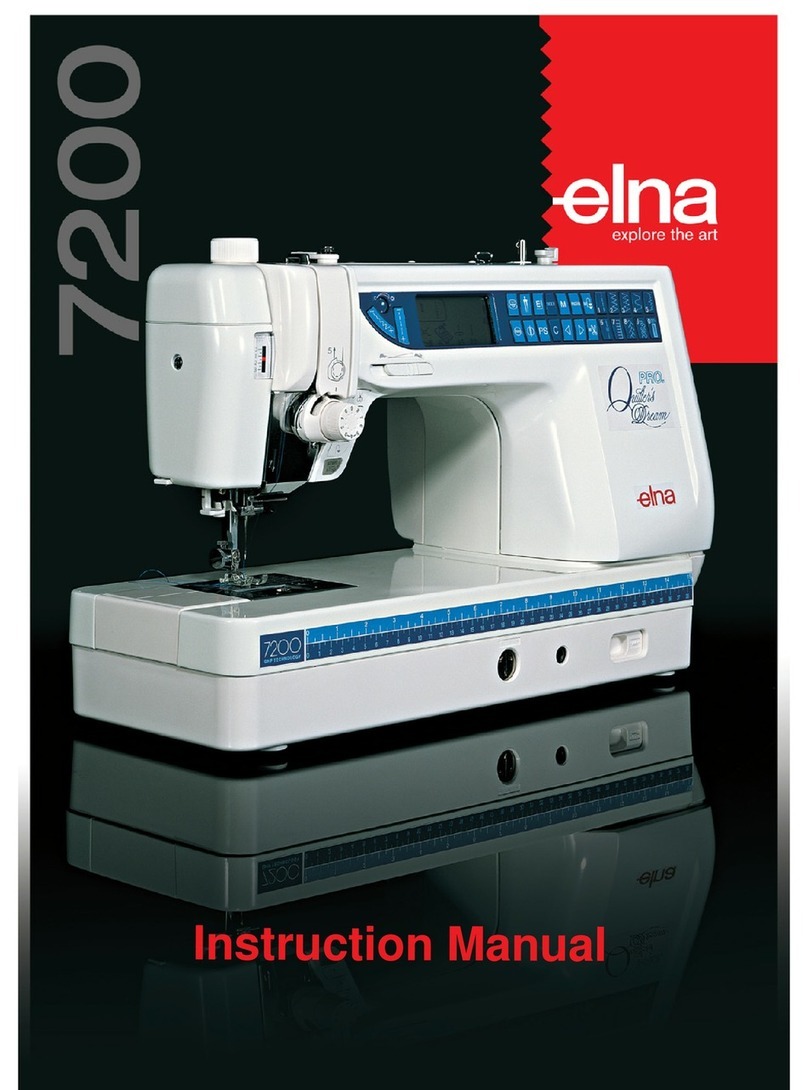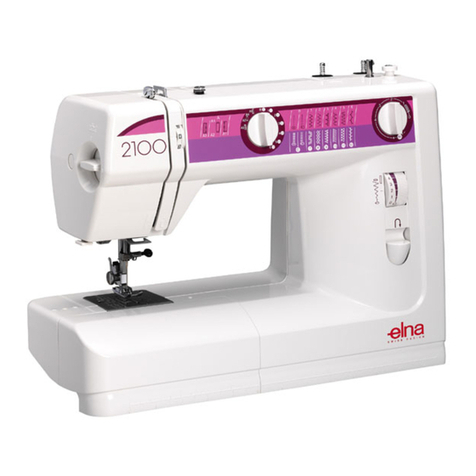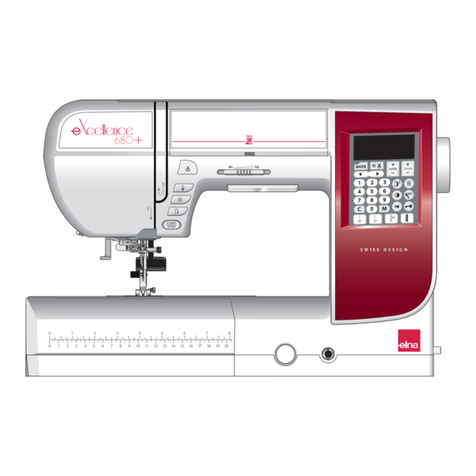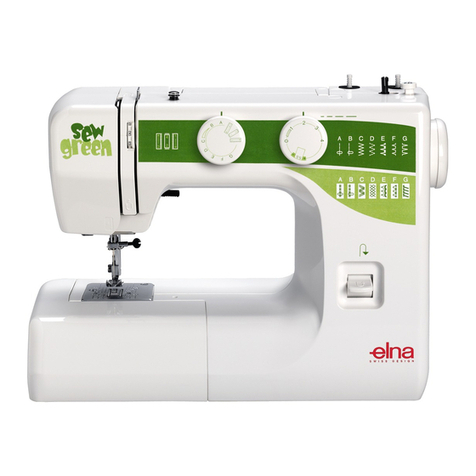Pages
Partiesessentielles. .. '..... '4-5
Accessoires. .'.6.
-Support-bobinelat6ral. .....6
Lubrification ....'." 7
Changementd'aiguilles. .,.....' 7
Fonctionnement.,.. .......,8
-Lumilredecouture ....... I
-lnterrupteurdes6curit6 .....8
Prdparationdel'enfilage ..,..... 9
-Disquessupport-bobine ..... I
-Tigeguide-fil ..... ......I
-C6nesetcouverclesporte-bobine. . ., . . 9
Enfilagedelamachine ...,,.10-12
-Boucleurinf6rieur ......10-1 1
-Boucleursup6rieur ...., 10-11
-Aiguilledroite ,..12
-Aiguillegauche. ..,,,....12
Changementdefils. .,..12
Essaidecouture. ... . ..13
R6glage des tensions . . 14-15
R6glage de la longueur des points . . . 15
Positionnementdeslames-couteau,,....16
Pages
MainParts ...4-s
Accessories
- Side spool pin base
Lubrication
Changing the Needles
Operation
- Sewing light . .
-Safetyswitch. .,........
Preparation f or Threading
- Extension discs
- Thread guide pole
- Spool holders and caps
ThreadingtheMachine . . .. . 10-'12
- Lower looper . 10-1 1
- Upper looper . 10-11
-Rightneedle ....12
-Leftneedle ......12
ChangingtheThreads ...12
Testsewing ...13
Adjusting the Thread Tensions 14-15
AdjustingthestitchLength. .....15
PositioningtheCuttingBlades. ...16
Pages
Couture de tissus particulierement lourds . . . . 17
Overlock d 3 f ils avecl aiguille (en utilisant la plague
aiguille"A") .......18
Utilisationdesaccessoires . . , . . . .19
Plaqueaiguille"B"... ....19
Ourletrould ..,2O
Guide-tissu. , , .. . . . . .21
-Couturesanscouteau ,.,.,..21
-Coutureaveccouteau ..,..,21
Languette largeur de poinl "2" et guide -
ruban/6lastique . 22-23
- Overlock avec cordonnet . . . .22
-Overlockavecruban ..,.,.,23
-Overlockavec6lastique ..,..23
Autresapplications...,......,24
Tableau de r6glage . . 26-27
Entretien. . ...28
- Nettoyage de la machine . . . .28
- Remplacement de la lame-couteau mobile .28
- Remplacement de l'ampoule . , . . . . . . 28
Petitsd6rangementsetcommenty rem6dier., . .,, . .,29
REPERTOIREALPHABET]OUE ..,, .,,.31
Pages
SewingExtra-HeavyFabrics .....17
3-Thread Overlock with 1 Needle (Using
the Needle Plate "A") . . . 18
SewingwithAccessories ..... 19-23
NeedlePlate"B".. ....19
RolledHemminS.... ........20
Clothcuide .........21
-Sewingwiththecutteroff . . .. .....21
-sewingwiththecutteron .........21
StitchTongue "2" andTape/ElasticGuide . . . . . . 22-23
-Cordedoverlocking .......22
-Overlockingwithtape ......23
-Overlockingwithelastic ....23
OthersewingApplications .. '...24
StitchselectionChart . ....26-27
Maintenance ........28
-Cleaningthemachine ....,.28
-Replacingthemovingblade . .......28
-Changingthelightbulb.. ' ' '24
Causesof andRemediesforMinorDisorders .. . ... . ' 29
ALPHABETICALINDEX .......31
6
6
7
7
8
8
I
I
9
I
9
3
